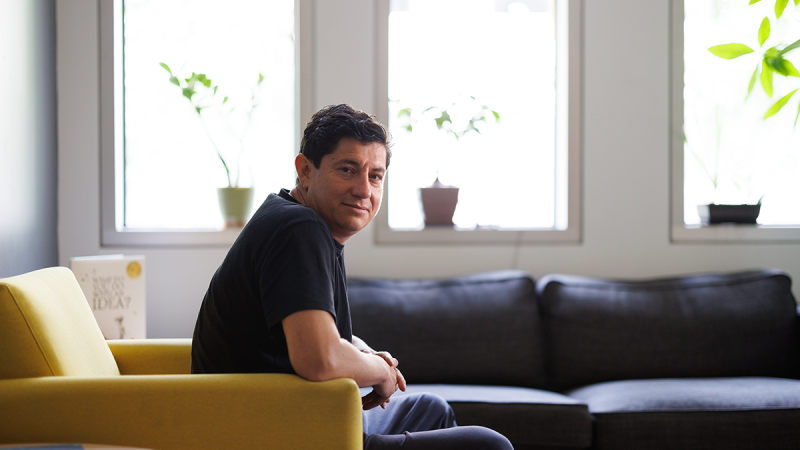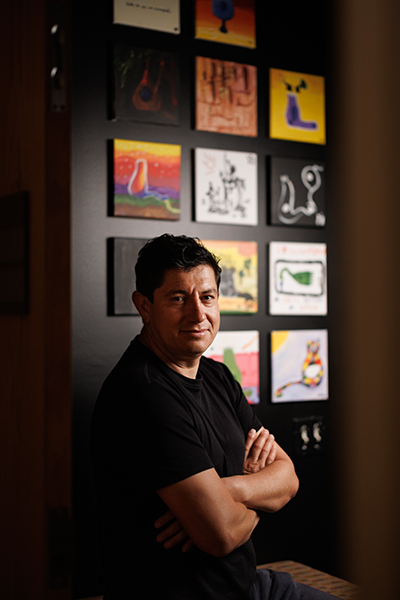
Newly Discovered ‘Sixth Sense’ Links Gut Microbes to the Brain in Real Time
In a breakthrough that redefines our understanding of gut-brain communication, researchers have uncovered a “neurobiotic sense,” a newly identified system that lets the brain respond in real time to signals from microbes living in our gut.
The new research, led by Duke University School of Medicine neurobiologists Diego Bohórquez, PhD, and M. Maya Kaelberer, PhD, and published in Nature, centers on neuropods, tiny sensor cells in the lining of the colon.

These cells detect a common microbial protein and send rapid messages to the brain that can help curb appetite and guide decision-making.
But this is just the beginning. The team believes this neurobiotic sense may be a broader platform for understanding how the gut detects microbes influencing everything from eating habits to mood — and even how the brain might shape the microbiome in return.
“We were curious whether the body could sense microbial patterns in real time and not just as an immune or inflammatory response, but as a neural response that guides behavior in real time,” said Bohórquez, an associate professor of medicine and neurobiology and senior author of the study.
The key player is flagellin, an ancient protein found in bacterial flagella, a tail-like structure that bacteria use to swim. When we eat, some gut bacteria release flagellin. Neuropods detect it, with help from a receptor called TLR5, and fire off a message through the vagus nerve a major line of communication between the gut and the brain.
The team, supported by the National Institutes of Health, proposed a bold idea: that the protein from gut bacteria could trigger neuropods to send an appetite-suppressing signal to the brain—a direct microbial influence on behavior.
The researchers tested this by fasting mice overnight, then giving them a small dose of flagellin directly to the colon. Those mice ate less.
When researchers tried the same experiment in mice missing the TLR5 receptor, nothing changed. The mice kept eating and gained weight, a clue that the pathway helps regulate appetite.
The findings suggest that flagellin send a “We’ve had enough” signal through TLR5, allowing the gut to tell the brain it’s time to stop eating. Without that receptor, the message doesn’t get through.
The discovery was guided by lead study authors Winston Liu, MD, PhD, and Emily Alway, both graduate students of the Duke Medical Scientist Training Program and postdoctoral fellow Naama Reicher, PhD.

Their experiments showed that disrupting the pathway changed how much mice ate. That finding pointed to a deeper link between gut microbes and behavior than once thought.
“Looking ahead, I think this work will be especially helpful for the broader scientific community to explain how our behavior is influenced by microbes,” said Bohórquez. “One clear next step is to investigate how specific diets change the microbial landscape in the gut. That could be a key piece of the puzzle in conditions like obesity or psychiatric disorders.”
The Wisdom of the Gut
Bohórquez joined Duke’s faculty in 2015 after discovering neuropods.
His earlier work showed the cells guide our sugar cravings by distinguishing sugar from artificial sweeteners and relaying that information to the brain in milliseconds. The insight hinted that our food choices are rooted in the gut, not just taste.

Now, the latest study looks at neuropods’ influence on satiety, offering a glimpse into how these tiny cells help regulate, not only what we eat, but how much we eat.
To track feeding behavior in fine detail, the study team built a custom system called “Crunch Master” that used audio and video recordings to monitor bite-by-bite eating. The tracking confirmed that flagellin reduced food intake.
The doses of flagellin used in the experiments matched the range naturally found in the guts of mice. That means the gut-brain signaling mechanism likely plays a role in day-to-day regulation of appetite.
The study focused on flagellin from Salmonella Typhimurium, a well-known pathogen. But not all flagellins are created equal. Different bacteria make different versions. Some are harmful; others are part of the body’s normal microbiome.
That complexity makes the discovery even more compelling. The previously unknown gut-based sensory system, “neurobiotic sense,” allows the brain to listen closely to a range of microbial cues, each with the potential to influence how we feel, eat, and respond to the world around us.
“It’s similar to how we use our other senses – sight, sound, smell, taste and touch – to interpret our world,” study authors said. “But this one operates from an unexpected place: The gut.”
Shantell Kirkendoll is a writer and managing editor in the Office of Strategic Communications at the Duke University School of Medicine.
Eamon Queeney is assistant director of multimedia and creative in the Office of Strategic Communications at the Duke University School of Medicine.
